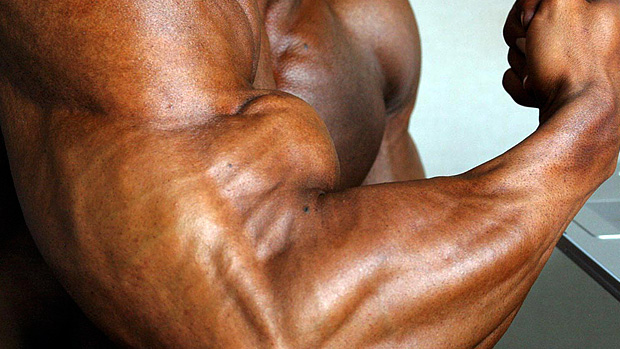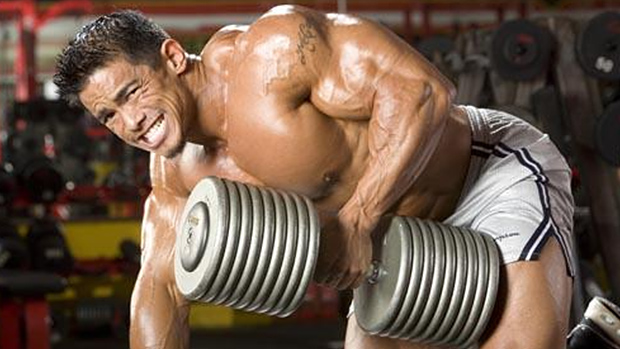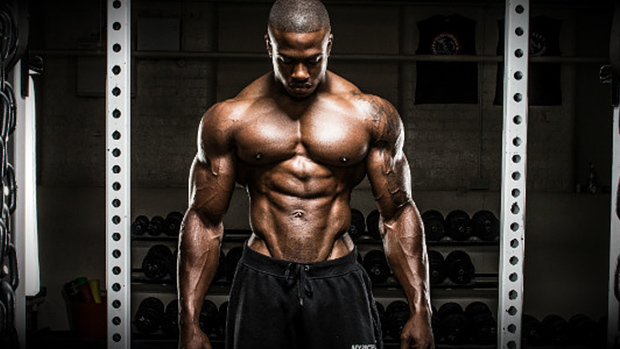I remember the first time I saw an elite lifter. He walked past a group of guys to the squat rack with the confidence of a silverback gorilla shuffling among his troop.
Even from a distance I could tell his focus was on the bar and nothing else, gripping the knurling so hard his knuckles turned white. His eyes, however, revealed nothing but peaceful calmness as his body prepared for the upcoming task.
Years later, I realized that that this lifter's confidence came from practicing habits. Specifically, he practiced the habits that would set him apart from everyone else with uncompromising consistency.
I've had the privilege to hang around very successful lifters and have learned that many of them practice certain habits that are often overlooked by the less experienced.
These habits not only have practical evidence, but are also backed by science and research.
My list of 7 habits below is for the lifter concerned with his physique, strength, and overall health and performance.
When did it become cool to fail at things?
Many veteran successful lifters stop their sets a couple reps short of failure most of the time instead. They do this to ensure that they keep getting stronger long term.
However, the meaning of the word "intensity" has been changed in the strength and fitness world from referring to the percentage of a 1RM, or how much weight is on the bar, to referring to how relatively hard the work is.
Let's say that that a lifter decides to do an "intense" set to failure on the deadlift. He gets 12 reps with the heaviest weight he can do for 12 before completely burning out.
I'd bet this guy's lower back, glutes, and hamstrings are toasted from pushing to failure, but is this productive?
Fact is, even an experienced lifter can't lift more than around 72% of his 1RM for 12 reps – and for significant strength gains, you need to be lifting at least 85%-90% of 1RM.
This is using intensity in the classical sense, to elicit strength gains.
Handling heavy weights in the proper rep range allows a motor pattern to be practiced and also "greases the groove," which helps ensure future efforts are successful.
All this isn't to say that experienced lifters don't use sets to failure strategically every now and then, either to test their mettle or elicit a specific training response. But they use them relatively infrequently.
They also understand that a true failure set is going to be very taxing on the nervous system, and that subsequent workouts will be negatively affected because of it and can lead to possible injury and overtraining.
High rep sets to failure are usually accompanied with a breakdown in form because of how fatigued the body and mind become. The fatigue makes the body lose the ability to develop tension, which kills your strength and can seriously injure you.
Think about a set to failure with the squat. Is it more likely that a lifter's legs give out first, or do the supporting muscles, such as the core?
I'll bet he starts bending over and falling forward first.
The Max Effort method (ME) of lifting 1-3 reps at 90% or above of 1RM is a great way to build strength for intermediate and experienced lifters, but going for broke isn't always that cool.
Because it's impossible to always hit a new 1-3 rep PR, successful lifters sometimes use back-off sets to get more sets above 90% of 1RM.
Novice and intermediate lifters alike sometimes work up to Max Effort sets too quickly and miss the point of the ME method – to hit as many quality sets above 90% as possible.
Say a lifter is front squatting and works up to a heavy single at 315 pounds. He knows he can't go any heavier, but his sets leading up to this were only two reps at 285 pounds and four reps at 225 pounds.
If 315 pounds is his 1RM for this day, 285 is barely 90% and 225 is nowhere near 90%.
Two sets of three total reps at 90% and above doesn't seem like quality work to me.
Successful lifters use back-off sets to remedy this. Instead of stopping at 315 pounds, an experienced lifter could take 90% of 315 pound (285 pounds rounded up) and do a couple sets of doubles or triples to get in more quality work above 90%.
The Beauty Of Backing Off
Not only do back-off sets allow for more quality sets when using the ME method, it's also a good way to train the nervous system and "grease" that motor pattern with good quality reps.
When true Max Effort reps are attempted, the body has to fire neurons more efficiently and synchronize the efforts of impulses to recruit more muscle fibers.
Once this occurs, the back-off sets attempted thereafter will be of better quality, which will allow room for more efficiency and strength gains.
In plain English, you'll get more out of them.
Back Off And Grow
Extra back-off sets can also be used to build more quality muscle.
Just drop the percentage down to 85% for more sets and slightly higher reps.
The body can still build strength at 85% of your 1RM. A true 5RM should be exactly 85% of your max, so if a lifter works up to a 1RM on a squat and then takes a little less than 85% of this number and does 3-5 back-off sets with 5 reps, he'd build muscle and strength simultaneously.
Imagine this.
You see a new lifter try to max out on the bench press. He lowers the bar all shaky and unstable, bounces it off his chest, gets it halfway up, and stalls. He squirms for a second under the motionless bar and then suddenly drops the weight on himself.
Proprioceptors like muscle spindles monitor change in muscle length and tension. When these proprioceptors process tension that could potentially damage tendons and other soft tissues, the Golgi Tendon Organ (GTO) inhibits (stops) muscle action and you end up going limp.
The same thing happens to the guy who drops to his knees trying to PR on the squat.
All this information is being processed by the spinal cord in something called a feedback loop. The problem is that this occurs well before the untrained lifter gets a chance to exhibit his true maximal strength.
The truth is he could lift more if he was conditioned to reduce this inhibition to a degree.
Successful lifters intuitively know that to get stronger they have to "learn to grind." What they're doing is essentially learning to ignore this signal so they can endure more tension before their receptors send a signal to shut down the activity.
While this is usually taught by lifting maximal weights, flexing maximally against a submaximal weight can also work.
This is what an experienced lifter is doing when he treats every set the same and pretends like he's lifting 700 pounds when he's warming up with 135 pounds.
Because he's tensing his muscles as much as he can and ignoring what his receptors are telling him (that there's no real weight to be concerned with), he learns to ignore the feedback loop.
This will translate to when he lifts maximal weights and make sure he's able to grind out that heavy rep.

Tensing up before getting under a heavy load not only reduces the inhibition of the feedback loop, but also helps protect from injury and ensures the maximal transfer of energy.
An accomplished lifter uses pre-tension or hyperirradiation, a term Pavel Tsatsouline often uses, to protect from injury and lift more weight.
Every compound lift – from squats, to deadlifts, to pressing, to Olympic movements – involves compressive and shear forces that the spine needs to be protected against.
Developing maximal muscular tension in the entire body keeps long-term lifters in the game and away from injuries by increasing stability. The rigidity developed in the lifter's core by bracing and flexing the hips and lower back protects the spine from compressive forces.
Hyperirradiation involves the contraction of the muscles surrounding the working muscle to contract. This in turn allows the working muscle to contract harder and more effectively.
The body can absorb and disperse shock when it's tight. This means that you won't hurt your back from lifting and no mean spirited guy like me can ask you how your vagina is doing because your poor little back hurts from menstrual cramps.
This more efficient contraction also makes you stronger and can almost immediately increase your lifts by 5 to 10 pounds. It does this by bringing more groups of muscles into the mix and transferring energy and force more effectively throughout your body, specifically through your core.
Try keeping your core tight and squeezing every muscle in your body the next time you get under the bar and see how much lighter the weight seems and how much more stable you feel.
Hard work, however reckless and counterproductive, is romanticized in weight rooms without any thought or consideration paid to the effect hard work puts on the body.
Doing crazy hard workouts is all fine and good to impress your skinny buddy you brought along to boost your ego, but remember there can be no supercompensation – yielding greater size, strength, and overall increased performance – without recovery.
Active rest workouts are frequently used by some of the best lifters to manage recovery and keep themselves in the game longer.
If you're not familiar, active rest workouts are non-strenuous sessions used to aid in recovery usually done the day after an intense workout.
General active rest workouts like sled dragging and flipping tires are often mentioned without any warning to how excess volume can actually be counterproductive to recovery.
So, consider yourself warned. Don't overdo it.
Active rest workouts should also involve muscle groups that were hit hard on the previous day. If used in moderation, these workouts help heal a battered body faster, restore muscle function by increasing blood flow to effected muscle, and help reduce delayed-onset muscle soreness (DOMS).
The take away is that it should be easy, and that it should involve the muscles you just worked out the day before.
If you had a hard squat workout the day before, a light walking sled drag would be a suitable workout, but that wouldn't work for recovering from a tough bench press workout.
There are a few different approaches experienced lifters use:
- Dynamic warm-ups: Going through a through dynamic warm-up increases blood flow to muscles by using some weight bearing positions that also allow for a stretch. Again, the type of warm-up used should be dependent on whether you're recovering from a lower or upper body workout.
- Short, low intensity workouts with higher volume: This involves going through a light workout using the same muscles with low intensity and higher reps but not many sets. So to recover from a heavy bench press workout, working up to 315 pounds for 3 reps, do a couple of sets of 135 pounds for 10 reps. These workouts should last 30 minutes or shorter.
- Hiking: Hiking is a low intensity active rest technique that gets a lot of attention and for good reason. The constant change in slope makes it a great stimulus on the legs while still being low intensity enough to allow and enhance recovery.
- Strongman training: Strongman training is a great active restoration technique if used with low intensity and low volume. I've found that using 50-60% of the weight that you'd normally do for building strength is a good rule when using this method for recovery. Just remember that upper body strongman drills should be used when trying to recover from a hard upper body workout.
Sled rows and YTMs are great concentric-only drills that are very useful to recover from a tough upper body workout.
Flexibility is important for the overall health and performance of the human body, but developing greater degrees of passive flexibility that can't be used in movement doesn't concern seasoned lifters.
If you ask some of the best strength and conditioning professionals how to develop adequate flexibility, they'll tell you to do compound lifts with weight through a full range of motion (ROM).
Squatting through full ROM requires flexibility and mobility along with muscular strength, coordination, stamina, stability, and even proper metabolic function.
Advanced lifters know that squats, Romanian deadlifts (RDLs), and pressing variations performed through a full ROM develop adequate flexibility and mobility. They also know that they need stability and strength to be developed with flexibility to actually be able to use that flexibility.
While lifting weights through full and healthy ROM is the preferred method of training flexibility, passive flexibility does have its place.
A certain amount of passive flexibility needs to be developed in case a joint is pushed past active ROM. This helps ensure that if you trip and fall or are forced into hyperextension, injury doesn't necessarily occur because the soft tissue is conditioned to endure the stretch.
Our comfy civilized lifestyle has become detrimental to the development of Testosterone as our dwindling T levels are being attacked by all sides.
Plastics that we drink and eat out of, cell phones that are hugging our balls all day, and hygiene products that we liberally apply to our bodies to push another day without showering all lower our T levels to half of what our great grandfathers had.
Research also shows that hot showers also contribute to lower T while cold has been shown to raise levels of muscle-producing enzymes like creatine kinase and lactate dehydrogenase.
Some lifters who've taken note of this have reaped great benefits from keeping their showers cold.
Rhyme and Reason
Taking ice baths haphazardly after workouts has been shown to have a negative effect on recovery so I won't leave you hanging as to how to use them.
To increase T levels, take a cold shower or a short ice bath (about 10 minutes) when you wake up in the morning and/or right before you go to sleep at night.
If you can't do both, I recommend opting to take them at night because of the added benefits of helping you fall asleep faster and sleep deeper, which also increases Testosterone.
(Not to mention, taking a cold shower in the morning is God-awful and you have to be a psychopath to do that.)
Instead of taking cold showers after your workout, use contrast showers where you stand in very hot water for three minutes before changing it to pure cold for one minute. Repeat this 3-4 times – this will help you recover more efficiently from the workout by increasing blood flow and reducing pain.
Ideas are recycled and refined over the years, but sometimes principles are muddled over time. A successful lifter that keeps himself in the game longer than most knows that he needs to understand the principles that work for him, whatever they may be, and practice them with dedication to ensure success.
Trends may change and a lifter's philosophy may shift, but the habits that are proven to help him will be the key to long-term success.
- Rasooli SA et al. Influence of massage, active and passive recovery on swimming performance and blood lactate. J Sports Med Phys Fitness. 2012 Apr;52(2):122-7.
- Banfi G et al. Whole-body cryotherapy in athletes. Sports Med. 2010 Jun 1;40(6):509-17.
- Cardinale M et al. Strength and Conditioning Ð Biological Principles and Practical Applications. United Kingdom: John Wiley & Sons, Ltd; 389-394, 2011.
- Hwang EC et al. Testicular steroidogenesis is decreased by hyperthermia in old rats. Urol Int. 2010;84(3):347-52.
- Siff MC. Stress management and restoration Sports restoration and massage. School of Mechanical Engineering, University of Witwatersrand; 1-12, 1992.
- Tiidus PM. Manual massage and recovery of muscle function following exercise: a literature review. J Orthop Sports Phys Ther. 1997 Feb;25(2):107-12.
- Tsatsouline P. Power To The People! Russian Strength Training Secrets For Every American. St. Paul, MN:Dragon Door Publications,Inc; 70-74, 1999.





